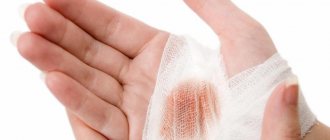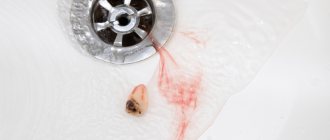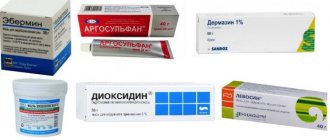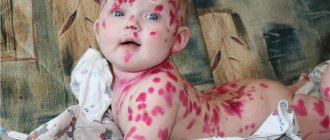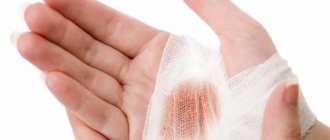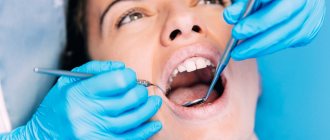A boil is an inflammatory process that involves the hair follicle and surrounding tissues. At the primary stage, at the moment of formation of the body of the boil, further ripening of the abscess can be prevented. At this moment, an ointment that draws pus from the boil comes to the rescue.
If an abscess has appeared, the best remedies for a boil are considered to not only help with pulling out, but also prevent the process from developing longer than the allotted time. Necrotic masses come out in a short period of time; it is enough to apply a drug related to traction medications.
The best remedies for boils are ointments that help with stretching
Which ointment draws out pus best?
Monday, December 20
3317
5
3
Content
- Why does pus appear in the wound?
- What kind of ointments are there that draw out pus?
- How to choose an ointment that draws out pus
- 10 most effective ointments for drawing pus from a wound
- Tetracycline ointment
- Tetraderm
- Dioxidine
- Ichthyol
- Levomekol
- Flucinar-N
- Streptocide
- Sintomycin
- Fluorocort
- Vishnevsky ointment
- Folk remedies for drawing pus from a wound
Any wound (cut, punctured, torn or chopped) can begin to fester. You are not insured against such a complication, even if the wound is minor. At the first signs of wound suppuration, you need to start using ointments that draw out the pus. If the problem gets worse, you will have to surgically “clean” the wound. Therefore, we will try to figure out why the wound may fester and which ointment is better to choose in order to prevent this or get rid of the pus.
Laundry soap
For the bath you need to prepare regular laundry soap and hot water.
- Grate the soap and dissolve a tablespoon of soap shavings in boiling water;
- The solution is cooled to a temperature of 60-70 degrees and the sore finger is dipped into it;
- Make the bath for at least 20 minutes, constantly adding hot water.
It is necessary to take soap baths at least 4 times a day. After the procedure, the finger is dried with a towel, and then Vishnevsky ointment or Levomekol is generously applied.
Why does pus appear in the wound?
Bacteria get into any wound, no matter what size it is. But the wound does not always fester. Suppuration is aggravated by the following factors:
- significant tissue damage;
- non-viable tissue in the wound cavity;
- foreign bodies in the wound;
- blood in the wound;
- many pathogenic microorganisms in the wound.
You need to be very careful after receiving any wound. Even a small splinter under the skin can cause suppuration. Pathogenic microorganisms that cause suppuration: streptococci, staphylococci, E. coli and the like.
The risks of suppuration increase if the injured person has diabetes, vascular disease, somatic problems, excess weight, and also if he is an elderly patient.
The nature of the wound also matters for the development of suppuration. If it is a puncture wound, then it may fester due to the fact that the wound channel is too narrow (there is no normal outflow of the contents of the wound). If during a wound the surrounding tissues are crushed, suppuration may begin due to the large amount of dead tissue in the wound and its contamination.
By the way, wounds on the neck and head heal faster, and on the feet – the slowest.
Symptoms of wound suppuration
Read also: 10 most effective acne remedies 10 creams and gels to combat acne and acne.
How to choose an ointment that draws out pus
Pus in the wound appears due to infection. With purulent wounds, various complications can develop and cause serious discomfort to a person. Symptoms of a wound infection include redness, swelling, pain when touched (or not), increased body temperature near the wound, and discharge of pus. Typically, for such symptoms, local medications based on hormones or with antibacterial properties are prescribed. What to look for when choosing an ointment for drawing out pus?
- Pregnancy and breastfeeding.
Most hormonal and antibacterial ointments are contraindicated during pregnancy and lactation, since they negatively affect the fetus and pass into mother's milk. - Accompanying illnesses.
Often, ointments based on glucocorticoids (these are analogues of adrenal hormones) are used to treat purulent wounds. These are potent substances with a pronounced anti-inflammatory effect. Literally after the first use of such ointments, negative symptoms go away completely or are significantly reduced. But you need to remember that such drugs are prescribed exclusively by a doctor and cannot be used for a long time, since they have many side effects. - Tendency to allergies.
Sometimes an allergic reaction can be provoked not only by the active substance of the ointment for suppuration, but also by the auxiliary components. Therefore, allergy sufferers need to be extremely careful, although in people who are not prone to such problems, the body can react. - Patient's age.
Although children often need ointments containing antibiotics, pediatricians try to avoid such drugs as much as possible. In children, the risk of developing allergies and digestive problems due to antibacterial agents is much higher than in adults. Therefore, if a child is injured, it is better to start with gentle methods (for example, treating the wound with saline solution). If there is no effect, you need to consult a doctor who will select the right antibacterial drug. Hormonal ointments are rarely prescribed to children. - Stage of the wound process.
You need to understand whether an ointment that draws out pus is really needed. If this is the second stage of the wound process (wound healing), then there is no point in such means. By this time, the wound has already cleared up - and ointments like Levomekol will simply be useless, although they will not do any harm.
IMPORTANT!
If the inflammation is too severe and there are symptoms of intoxication of the body (general weakness, increased body temperature), and ointments do not help, you should urgently consult a doctor.
Reasons for the development of purulent
General recommendations for purulent wounds
To get rid of purulent inflammation and treat wounds, doctors use antibacterial, antiseptic and immunomodulatory drugs. If intoxication has begun, hemodialysis, hemosorption and forced diuresis are used on an outpatient basis.
To speed up treatment and avoid complications, follow these rules:
- Do not forget to smear the damaged area with antiseptics and use antibiotics. This will help relieve inflammation faster and avoid complications.
- Do not visit the bathhouse, sauna or solarium, and also avoid the beach and hot baths.
- Do not go to the pool or swim to avoid introducing a new infection.
- Do not try to squeeze out the pus yourself!
- Do not ignore contraindications to medications so as not to harm yourself.
- If signs of purulent inflammation do not go away for more than a week, rush to see a doctor. A specialist will be able to open the wound and remove the pus without consequences for the body.
If you observe symptoms of an abscess of a closed wound, do not neglect treatment and do not ignore recommendations in order to avoid serious complications and consequences that may arise due to pus inside the wound.
Read more on the topic: Medications Injuries
Tetracycline ointment
This antibacterial ointment has long been popular because it works well against bacterial infections of the eyes and eyelids. Tetracycline ointment relieves inflammation, reduces redness and pain (excellent, for example, for treating stye). The product does not cause a burning sensation, the tube has a convenient tip, the ointment can also be used for irritation of the mucous membrane of the intimate area. Tetracycline ointment is inexpensive, suitable for animals, the only drawback is that it is sometimes difficult to apply behind the eyelid.
Tetracycline ointment
JSC "Tatkhimfarmpreparaty", Russia
Tetracycline ointment is used for skin diseases: acne, streptostaphyloderma (a pustular skin disease caused simultaneously by strepto- and staphylococci), furunculosis (multiple purulent inflammation of the skin), folliculitis (inflammation of the hair follicles), infected eczema (neuroallergic inflammation of the skin with associated microbial infection) , trophic ulcers (slow-healing skin defects), etc.
from 38
160
- Like
- Write a review
Prevention
To prevent purulent diseases of the skin and subcutaneous tissue, it is necessary:
- compliance with hygiene rules (keeping skin clean);
- balanced diet;
- maintaining immunity at a high level;
- treatment of skin lesions with antiseptics;
- avoid using other people's towels, razors, washcloths;
- timely treatment of chronic diseases of the liver, stomach, intestines, diseases of the ENT organs;
- rejection of bad habits.
Tetraderm
This is a complex drug containing many active substances: antibacterial, antifungal components, an analogue of the adrenal cortex (and in a form that is not absorbed into the blood), dexpanthenol. "Tetraderm" accelerates wound healing, draws out pus, relieves inflammation, reduces itching, allergic manifestations, and destroys harmful bacteria. The ointment also helps treat nail fungus and bumps in the corners of the mouth. Among the disadvantages of the product are the high price and the fact that the drug is not used on open wounds.
Tetraderm
Vertex CJSC, Russia
Treatment of dermatoses of inflammatory origin with concomitant bacterial and mycotic infection or a high probability of secondary infection (simple and allergic dermatitis, atopic dermatitis (including diffuse neurodermatitis), limited neurodermatitis, eczema, dermatomycosis (dermatophytosis, candidiasis, pityriasis versicolor), especially when localized in the groin area and large folds of skin; simple chronic lichen (limited neurodermatitis).
from 483
5.0 1 review
25
- Like
- Write a review
Dioxidine
This drug is a serious antibiotic that is prescribed for severe infections. You can buy Dioxidin both in the form of an ointment for external use and in the form of injections (for the treatment of infections of internal organs, for sepsis). Due to its too active action, Dioxidin is contraindicated for pregnant women, breastfeeding women and under 18 years of age. The drug can only be used under medical supervision. The product can be used for severe allergies while taking an antihistamine. This ointment for drawing out pus has few side effects, but contraindications include adrenal insufficiency.
Dioxidine
OJSC "Nizhpharm", Russia; PJSC "Biosintez", Russia; Novosibkhimpharm OJSC, Russia
Broad-spectrum antibacterial bactericidal drug.
Purulent bacterial infections caused by sensitive microflora when other chemotherapeutic agents are ineffective or poorly tolerated. External use - superficial and deep wounds of various locations; - long-term non-healing wounds and trophic ulcers; - phlegmon of soft tissues; - infected burns; - purulent wounds with osteomyelitis. Intracavitary administration - purulent processes in the chest and abdominal cavity; - for purulent pleurisy, pleural empyema, lung abscesses, peritonitis, cystitis, wounds with deep purulent cavities (soft tissue abscesses, pelvic cellulitis, postoperative wounds of the urinary and biliary tract, purulent mastitis). Treatment of burn and purulent-necrotic wounds promotes faster cleansing of the wound surface, stimulates reparative regeneration and marginal epithelization, and has a beneficial effect on the course of the wound process. from 35
5.0 1 review
709
- Like
- Write a review
Forecast
The prognosis for superficial purulent forms is favorable, since after healing of the lesion there are no traces left on the skin. In deep forms, long-term non-absorbable infiltrates and noticeable scars can form.
Timely treatment of inflammatory tissue diseases (infiltrative stage) gives a good effect and prevents suppuration of the infiltrate. It is also important to choose the right local antibacterial drug.
It must have a broad spectrum of action and good penetrating ability in order to deliver the antibiotic to the inflammatory focus. This will make it possible to avoid repeated operations and preserve the ability of patients to work.
Ichthyol
Budget ointment for suppuration of wounds, which was used by our grandmothers. “Ichthyol” has long proven its effectiveness in suppressing pathogenic flora. In addition, the ointment has an irritating effect, stimulating improved blood flow. Therefore, “Ichthyol” is indicated not only for the treatment of purulent wounds, but also for the treatment of diseases of the pelvic organs (in women and men). The drug reduces congestion by stimulating blood circulation in the internal organs. You can buy “Ichthyol” at any pharmacy, it perfectly treats inflammatory skin diseases that cause itching, a jar lasts a long time, the product draws pus from closed wounds, helps with ingrown toenails, and has a thick consistency. The ointment has a pungent odor, and it also needs to be carefully applied to the mucous membranes.
Ichthyol
JSC "Monfarm", Ukraine; Yaroslavl Pharmaceutical Factory, Russia
Ichthyol is an anti-inflammatory agent, has a local anesthetic, antiseptic, and keratoplasty effect.
from 24
1030
- Like
- Write a review
Levomekol
Perhaps one of the most famous ointments for drawing pus from a wound. Levomekol is considered the most effective drug among non-hormonal drugs. In addition to the fact that the ointment gets rid of pus, it fights the causes of its appearance - harmful bacteria. The composition contains a regenerating substance that helps the wound heal faster. "Levomekol" can be used not only on wounds, but also for burns, hemorrhoids, to treat acne and gum disease. This drug is ideal for purulent wounds, it gives a good effect when applied under a bandage, can be used in children from 1 year old, and contains almost no auxiliary components. Among the disadvantages is the possibility of allergic reactions.
Levomekol
OJSC "Nizhpharm", Russia
An ointment that has an antimicrobial, anti-inflammatory, drying effect and is used for: Purulent wounds (including those infected with mixed microflora) in the first (purulent-necrotic) phase of the wound process.
from 38
1115
- Like
- Write a review
Flucinar-N
This potent ointment for purulent wounds contains an antimicrobial component and an analogue of the adrenal cortex. "Flucinar-N" not only destroys pyogenic microorganisms, but also relieves inflammation, swelling, and pain. The drug is perfect for treating secondary infections, when the wound becomes infected from the outside or from a source inside the body. "Flucinar-N" can be used to treat varicose veins, it is indicated for children over 2 years old, it helps with atopic dermatitis and psoriasis. The ointment has few contraindications, but it can be addictive.
Flucinar N
Pharmaceutical plant Elfa A.O., Poland
Allergic dermatoses complicated by bacterial infection caused by neomycin-sensitive flora: allergic (including contact, occupational, solar) dermatitis;
eczema (including contact, constitutional, coin-shaped, seborrheic); hives; psoriasis (including scalp); erythema multiforme; erythroderma; atopic dermatitis; pruritus; dermatoses that cannot be treated with other corticosteroids (including lichen planus, lupus erythematosus /skin manifestations/); secondary infections from insect bites. Bacterial skin infections caused by neomycin-sensitive flora, complicated by the development of allergic reactions: impetigo; infected diaper rash. First degree burns. from 199
162
- Like
- Write a review
Streptocide
You can buy “Streptocide” not only in the form of an ointment, but also in powder. The drug has a drying effect. And although it contains the antibiotic sulfanilamide, the ointment is not considered an antibacterial agent. This is because the active substance here, unlike antibiotics, does not destroy pathogenic microorganisms, but stops their reproduction. This is called the "bacteriostatic effect". “Streptocide” is a safer drug than antibiotics (after all, when bacteria die, the body becomes intoxicated). And although the manufacturer allows the use of the drug from birth, there are known cases of jaundice during treatment with Streptocide. This ointment for purulent wounds is odorless, reduces pain, is suitable for healing tattoos, and should be stored in the refrigerator.
Streptocide
Lyumi, Russia
Infectious and inflammatory diseases caused by microorganisms sensitive to sulfanilamide, incl.
tonsillitis, erysipelas, cystitis, pyelitis, enterocolitis, infectious diseases of the skin and mucous membranes. from 9
528
- Like
- Write a review
Causes
The nature of all purulent-inflammatory diseases is infectious. They are caused by microorganisms: gram-positive and gram-negative bacteria, aerobes and anaerobes, as well as fungi.
Staphylococcus is the most common causative agent of skin and tissue diseases (causes boils , abscesses , carbuncles , cellulitis , hidradenitis ).
The most significant causes of abscesses on the body:
- Contamination of the skin with pathogenic flora and its penetration through microcracks, abrasions and cuts into the ducts of the sebaceous and sweat glands.
- Dry skin.
- Irritating effects of chemicals.
- Hypovitaminosis and unbalanced diet.
- Chronic intoxication.
- Foci of purulent infection in the body.
- Diseases of the gastrointestinal tract.
- Endocrine diseases (pustular diseases are the most severe in diabetes mellitus ).
- Predisposing factors that contribute to the development of purulent infection are conditions after previous infections and operations, and the use of glucocorticosteroid drugs.
The main factors that determine the development of purulent inflammation are:
- Number and virulence of pathogenic microorganisms.
- State of general and local immunity.
- Anatomical and physiological features of the area of introduction of microorganisms.
- General and local blood circulation.
- Allergy of the patient.
Sintomycin
You can buy Sintomycin at any pharmacy; this drug has long won the trust of patients. "Syntomycin" is an antibiotic whose active ingredient is chloramphenicol. From Levomekol, which contains the same active ingredient, Sintomycin differs in that it only kills pathogenic microflora, but does not heal wounds. The ointment can be used in children from 2 months; it is prescribed for abscesses on the face and acne, and for panaritium (inflammation of the soft tissues of the fingers). The downside of the drug is that after opening the tube it is stored for only 6 months.
Sintomycin
OJSC "Nizhpharm", Russia; AltaiVitamins, Russia
Indications for the use of the drug Sintomycin are: purulent lesions of the skin and mucous membranes, trachoma, sycosis;
boils, carbuncles; long-term non-healing trophic ulcers, burns of II and III degrees. from 22
5.0 1 review
923
- Like
- Write a review
Diet
Diet 15 table
- Efficacy: therapeutic effect after 2 weeks
- Timing: constantly
- Cost of food: 1600-1800 rubles per week
Patients with purulent-inflammatory lesions of the skin and tissue can adhere to the general table - Diet 15 table . The food at this table is complete and balanced. During illness, you can increase the amount of fruits, berries, vegetables, juices, and also include foods rich in fiber (bran bread, cereals, nuts, seeds). To reduce intoxication, you need to increase fluid intake, including purified water, juices, herbal decoctions, and mineral water. It is undesirable to eat fried foods and smoked foods. For rapid wound healing, it is necessary to avoid alcohol.
Fluorocort
This is a hormonal drug for the treatment of purulent wounds, and on small lesions the positive effect is noticeable almost after the first use. Contains the hormone triamcinolone. It is important to use Fluorocort only as directed and under the supervision of a doctor, since long-term use of the drug causes many side effects. The ointment helps well with jewelry rejection and for healing ear piercings. Fluorocort effectively relieves pain, is indicated for children over 1 year of age, and can be used in the second and third trimester of pregnancy after consultation with a doctor. The downside of the ointment is that it is too greasy, so it can leave marks on clothes.
Fluorocort
Gedeon Richter, Hungary
The drug has a pronounced anti-inflammatory, antiallergic, membrane-stabilizing and antipruritic effect and is used for the local treatment of dermatoses of non-infectious etiology.
from 184
5.0 1 review
567
- Like
- Write a review
Vishnevsky ointment
Probably the first ointment that comes to mind when we hear about “pulling out pus.” And although experts have mixed opinions about this remedy, patients praise Vishnevsky’s ointment. The product contains castor oil and birch tar. These two natural components are not antibiotics, but only have an antiseptic effect, that is, the effect of Vishnevsky ointment is weaker than that of antibiotics, but it is safer and not as aggressive. The drug is suitable for pregnant women, for children from 1 year old, it can be used on mucous membranes. Among the disadvantages is an unpleasant smell.
Balsamic liniment according to Vishnevsky
Tula Pharmaceutical Factory, Russia
- skin abscess;
- boil; - lymphadenitis; — lymphangitis; - burns; - frostbite; - wounds; - ulcers; - bedsores. from 29
177
- Like
- Write a review
Aloe juice treats minor purulent inflammations
Read also: Top 5 universal remedies for burns The most effective remedies for burns: thermal and solar.
Pharmaceuticals
It must be remembered that any damage to the skin, except that caused by a sterile instrument, is associated with infection . Therefore, if signs of suppuration and inflammation appear, you need to prevent the wound from closing by constantly moistening it with hydrogen peroxide or simply salt water. In order to cope with the infection and draw out the pus, there are many effective medications. Almost all of them are available in any pharmacy and are affordable. At home, you can treat an abscess with drugs such as:
- Vishnevsky ointment (balsamic liniment).
- Ichthyol ointment.
- Levomekol.
- Streptocide ointment.
- Syntomycin ointment, etc.
Before applying the ointment, you need to treat the surface of the skin with hydrogen peroxide or furatsilin, and after applying the ointment, cover it with a clean bandage . The ointment and bandage should be changed according to the instructions for use of this product.
Folk remedies for drawing pus from a wound
In addition to pharmaceutical preparations for purulent wounds, you can use folk remedies. But we want to warn you right away that such methods are not suitable for serious wounds. They are more effective for small boils and purulent pimples.
- Alcohol tincture of calendula.
This tincture relieves inflammation, dries the skin, and works as an antiseptic. In order for pus to come out of the pimple (even if it is deep), a cotton pad needs to be moistened with calendula and applied to the pimple (boil) overnight. In the morning you will see pus on the cotton pad. - Aloe.
Aloe leaves (pulp) perfectly draw out pus, relieve inflammation and help the wound heal faster. Cut an aloe leaf in half and apply the pulp to the inflamed area. Cover with a band-aid and let it work for several hours (preferably all night). - Potato.
Starch, which is found in abundance in potatoes, copes well with purulent inflammation. Grate a small potato on a fine grater and apply to the area of inflammation. On top - a cotton pad or bandage. Leave this bandage on for several hours or overnight. - St. John's wort infusion.
For 1 glass of boiling water – 1 tbsp. l. dry St. John's wort. Steam the infusion for 15 minutes. Then you need to strain it and make lotions. St. John's wort relieves itching, irritation, reduces inflammation, and kills bacteria. To draw out pus from a pimple or boil, moisten a cotton pad with St. John's wort infusion, apply to the site of inflammation and leave overnight.
Stages of development
At the very beginning of development, a boil can easily be confused with an ordinary pimple. However, within 3-4 days the inflammation grows, covering the surrounding tissues. Upon palpation, you can feel the tension and density of these tissues.
After a few more days, a sac with a purulent formation forms in the center of the boil, a necrotic core appears and the tissue softens.
Over time, the boil, unable to withstand a large amount of pus, opens and the pus, rejecting the necrotic core, flows out. After which the swelling gradually subsides and redness passes, and a small scar forms in the center of the former boil.
The most dangerous boils are those that arise near the lips, ears and nose. You should not try to squeeze out boils yourself, even if they have arisen in other locations. This can lead to the spread of infection, which will entail serious complications leading to the development of regional lymphadenitis, lymphangitis, and thrombophlebitis.
